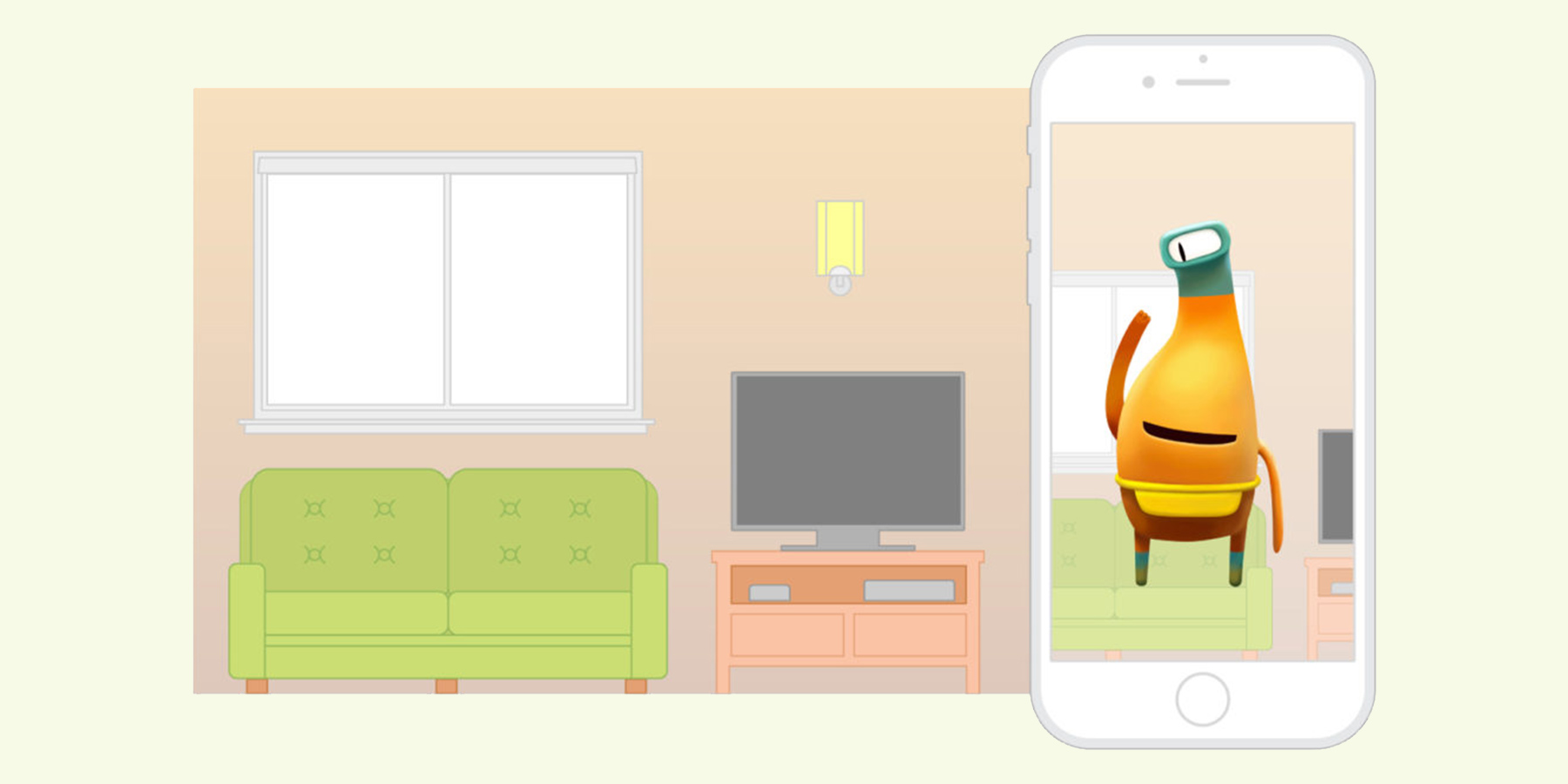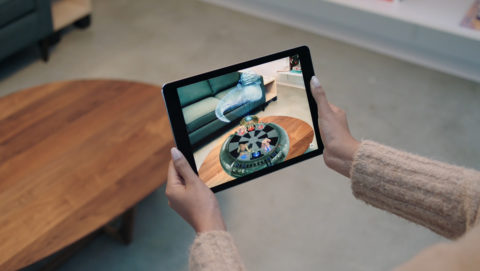For once, Apple really is attempting to distort reality with AR. Here’s how augmented reality in iOS 11 could change everything
At Apple’s recent Worldwide Developer Conference, the company announced that it was getting into augmented reality. AR, as it’s more commonly known, has been a techy buzzword for a number of years now, but Apple’s belated involvement has the potential to drag it into everyday mainstream usage like nothing before.
So what exactly is AR, and how does Apple plan to change our world with it?
A new perspective on the world
Augmented reality is often bundled together in conversations with virtual reality (VR), which you’re probably more familiar with. However, while AR and VR typically utilize similar technology, the actual user experience is really very different.
While VR seals you off inside a completely separate digital world through a bulky helmet or eyepiece, AR merely enhances your real-world view with digital information. It can do so through a typical screen or display, which means that AR can be used in a much broader range of scenarios than VR.
Indeed, it could be said that AR has been in practical use for decades. Just think of the head-up displays that are used in fighter planes and automobiles, or the graphical overlays that are employed in sports broadcasts.
Bringing it back to mobile devices, millions of smartphone users have perhaps unwittingly been using AR whenever they start up Pokemon GO. Niantic’s hit game has you battling digital monsters on park benches and restaurant tables, which is a simple but immersive use of AR technology.
Perhaps even more frivolously familiar will be the 3D effect filters or lenses that you can apply to selfies in apps like Snapchat and Messenger.
The result of AR’s greater practical application potential is that it has a much bigger immediate future than VR, despite the latter getting most of the headlines. ABI Research estimates that the AR market will be worth $114 billion by 2021, which is 75 percent more than the research firm’s equivalent estimate for the VR market.
Enter ARKit
It’s no great shock, then, that Apple should be interested in augmented reality. At WWDC 2017, the company outlined its first steps into the world of AR.
Apple is building AR directly into iOS 11 using a core technology called ARKit. According to Apple CEO Tim Cook, this is “the first step in making [AR] a mainstream kind of experience”.
Head of software at Apple, Craig Federighi, showed the WWDC 2017 crowd a developer test application that was built using ARKit. Through computer vision technology the app was able to use an iPhone’s camera to identify the surface of a table within its live view.
It was then possible to add digital 3D objects to that surface, such as a cup or a lamp. Moving the iPhone around those objects – or indeed moving those objects around each other – showed that they were firmly implanted into this real world scene, casting real time shadows onto the table.
Another impressive ARKit demo came from Wingnut AR, the new AR division of movie director Peter Jackson. Members of his team showed a detailed computer generated sci-fi action scene playing out right there on the same table, but this time through the screen of an iPad. As airships buzzed around and buildings were reduced to rubble, the iPad wielder could pan and track like he was directing the scene himself.
AR for the masses
The important thing to note here is that you won’t need to buy Apple’s next iPhone to make use of its new ARKit-powered features. In most cases, the iPhone or iPad you’re using now will be just fine. All you need do is agree to install when that iOS 11 update notification pops up in a few months’ time.
Apple claims that “hundreds of millions of iPhones and iPads” will be able to make use of AR from the get-go. As a result, ARKit will become “the largest AR platform in the world” overnight.
As we’ve already hinted at, Apple is opening this AR functionality out to third party developers from the off. ARKit contains a range of programming tools that will enable thousands of developers to add powerful AR elements to their apps in time for iOS 11’s release.
Basically, you should expect to see a whole lot of AR-enabled apps for your iOS device come this September (going by previous iOS release dates).
One notable early adopter will be flatpack furniture giant Ikea, which is working with Apple to enhance its app with AR capabilities for iOS 11. Ikea’s app will enable you to point your iPhone’s camera towards a space in your house and have an item of furniture projected into that space as if it were a real solid 3D object.
In truth, Ikea’s app already does this to a certain extent, but with Apple’s ARKit platform the effect will be far more precise – and thus much more believable. It’s been confirmed that Pokemon GO’s AR elements will receive a similar ARKit boost, and we’d be very surprised if Snapchat and Messenger didn’t follow suit with their AR selfies .
AR future
Apple’s initial ARKit demo, while impressive, was merely the first small step in its AR plans. Which begs the question: where next for Apple and AR?
Even Apple doesn’t know entirely, and that’s rather exciting. Speaking recently to Bloomberg, Apple CEO Tim Cook predicted that “You’ll see things happening in enterprises where AR is fundamental to what they’re doing. You’re going to see some consumer things that are unbelievably cool.”
“The technology’s not complete yet. But that’s the beauty to a certain degree. This has a runway. And it’s an incredible runway.”
As with apps and games before it, Apple is placing the immediate future direction of AR in the hands of third-party developers, and in turn with you the iPhone and iPad user. Whatever app developers can dream up and execute over the coming years, and how you respond to those augmented reality app enhancements, will largely determine just how augmented our future reality will be.




